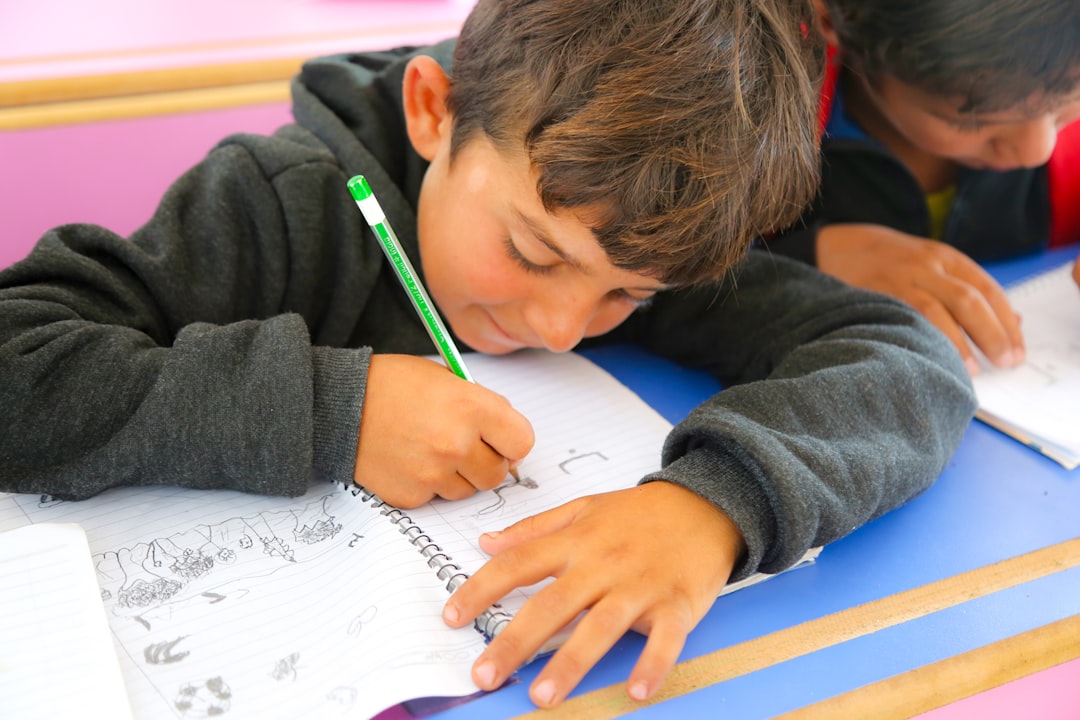Education is a fundamental human right and a cornerstone of societal progress. Yet, across the globe, millions of young people face significant barriers to accessing quality learning opportunities. These challenges vary widely from country to country, influenced by economic disparities, social inequalities, technological advancements, and evolving job markets. Understanding these diverse issues and exploring effective solutions is crucial for fostering a more equitable and prosperous future.
This article delves into the multifaceted problems impacting youth education worldwide, from disparities in access and quality to the pressing need for relevant skills in a rapidly changing world. We will explore common challenges faced by different nations and highlight innovative, fact-based solutions being implemented. By the end, you’ll gain a comprehensive understanding of the global educational landscape and the collaborative efforts required to empower the next generation.
Access and Equity: The Foundation of Learning
One of the most pervasive issues in youth education globally is the disparity in access and equity. While primary school enrollment rates have significantly improved worldwide, challenges persist, particularly at secondary and tertiary levels, and for marginalized groups.
Geographic and Socioeconomic Barriers
In many low-income countries, particularly in Sub-Saharan Africa and parts of South Asia, geographical isolation and poverty prevent millions of children and adolescents from attending school. Long distances to schools, lack of safe transportation, and the need for children to contribute to household income are significant obstacles. Families often cannot afford school fees, uniforms, or learning materials, even when public education is technically free.
Even in high-income countries, socioeconomic status profoundly impacts educational outcomes. Students from low-income backgrounds often attend under-resourced schools, have less access to extracurricular activities, and face greater pressure to work part-time, affecting their academic performance.
Fact: According to UNICEF, as of 2023, approximately 250 million children and young people worldwide are out of school, with girls in some regions facing particular disadvantages due to cultural norms and safety concerns.
Solutions for Enhanced Access
Addressing access requires multi-faceted approaches:
- Infrastructure Development: Building more schools closer to communities, especially in rural and remote areas.
- Conditional Cash Transfers: Programs that provide financial incentives to families for keeping children in school, proven effective in countries like Brazil and Mexico.
- Inclusive Policies: Implementing policies that support girls’ education, provide accommodations for students with disabilities, and offer language support for minority groups.

Quality of Education: Beyond Enrollment
Enrollment is only one part of the equation; the quality of education received is equally critical. Many education systems struggle with outdated curricula, insufficient resources, and a shortage of well-trained teachers, leading to poor learning outcomes.
Teacher Shortages and Training Gaps
A significant challenge globally is the lack of qualified teachers, particularly in STEM subjects and in rural areas. Many existing teachers may lack adequate training in modern pedagogical methods, classroom management, or specialized subjects. This often results in rote learning, disengaged students, and a failure to develop critical thinking skills.
“Quality education is not just about getting children into school, but ensuring they learn effectively while they are there. This requires investing in teachers, relevant curricula, and supportive learning environments.”
Curriculum Relevance and Resources
Outdated curricula often fail to equip students with the skills needed for the 21st-century workforce. There’s a growing disconnect between what is taught in schools and the demands of employers. Furthermore, many schools, especially in developing regions, lack basic resources like textbooks, libraries, and science laboratories, hindering effective learning.
Strategies for Improving Quality
Improving educational quality requires systemic reforms:
- Teacher Professional Development: Continuous training programs focusing on modern pedagogy, digital literacy, and subject-specific expertise.
- Curriculum Reform: Updating curricula to emphasize critical thinking, problem-solving, creativity, and digital skills, aligning with global and local labor market needs.
- Resource Allocation: Increased investment in learning materials, technology, and school infrastructure.
The Digital Divide and Technological Integration
The rapid advancement of technology presents both immense opportunities and significant challenges for youth education. While digital tools can revolutionize learning, the “digital divide” exacerbates existing inequalities.
Unequal Access to Technology
In many parts of the world, particularly rural areas and low-income communities, access to reliable internet, computers, and other digital devices remains limited. This creates a significant disadvantage for students who cannot participate in online learning, access digital resources, or develop essential digital literacy skills. The COVID-19 pandemic starkly highlighted this disparity, as remote learning became a necessity.
Effective Integration of EdTech
Even where technology is available, its effective integration into the curriculum is often lacking. Teachers may not be trained to use educational technology effectively, or the technology itself may not be tailored to local contexts and learning needs. Simply providing devices without proper pedagogical support does not guarantee improved learning outcomes.
Learn More: The UNESCO Global Education Monitoring Report 2023 provides an in-depth analysis of the role of technology in education, highlighting both its potential and pitfalls. You can explore their findings here: UNESCO GEM Report 2023: Technology in Education.
Bridging the Digital Gap
Solutions for leveraging technology in education include:
- Universal Connectivity: Initiatives to expand internet access to underserved areas, often through public-private partnerships.
- Device Provision: Programs providing affordable or free devices to students and schools.
- Teacher Training in EdTech: Comprehensive training for educators on how to effectively integrate digital tools into their teaching practices.
- Localized Digital Content: Development of culturally relevant and curriculum-aligned digital learning materials.

Skills Gap and Future Readiness
The global economy is evolving rapidly, driven by automation, artificial intelligence, and new industries. This creates a “skills gap” where traditional education systems may not adequately prepare youth for the jobs of today and tomorrow.
Mismatch Between Education and Industry Needs
Many graduates, even from higher education, struggle to find employment because their skills do not match industry demands. There is a growing need for critical thinking, creativity, collaboration, communication, and digital literacy, often referred to as 21st-century skills. Traditional curricula, focused on rote memorization, often fall short in developing these competencies.
The Importance of Vocational and Technical Training
In some countries, vocational and technical education (VTE) is undervalued or underfunded, despite its potential to provide practical, job-ready skills. Strengthening VTE pathways can offer viable alternatives to traditional academic routes and address specific industry needs, particularly in sectors like manufacturing, IT, and healthcare.
Preparing Youth for the Future
To bridge the skills gap, education systems must adapt:
- STEAM Education: Emphasizing Science, Technology, Engineering, Arts, and Mathematics to foster innovation and problem-solving.
- Project-Based Learning: Implementing pedagogical approaches that encourage hands-on learning, collaboration, and real-world problem-solving.
- Industry Partnerships: Fostering stronger links between educational institutions and industries to ensure curricula are relevant and provide internship opportunities.
- Lifelong Learning Frameworks: Developing systems that support continuous learning and reskilling throughout an individual’s career.
Mental Health and Well-being in Education
Beyond academic challenges, the mental health and well-being of young people are increasingly recognized as critical factors influencing their ability to learn and thrive. High-pressure environments, social media, and global uncertainties contribute to rising rates of anxiety and depression among youth.
Stress, Anxiety, and Academic Pressure
In many education systems, particularly those with highly competitive entrance exams or demanding academic standards, students face immense pressure. This can lead to chronic stress, anxiety, burnout, and even depression, impacting their concentration, motivation, and overall learning capacity. The pressure is often compounded by societal expectations and parental aspirations.
Lack of Support Systems
Many schools lack adequate resources for mental health support, such as school counselors, psychologists, or programs promoting emotional literacy. Teachers may also not be equipped to identify or address mental health issues among their students, leading to unaddressed needs that can escalate.

Fostering Well-being in Schools
Integrating mental health support into the educational framework is vital:
- Comprehensive Mental Health Programs: Implementing school-based counseling services, peer support programs, and mental health literacy curricula.
- Teacher Training: Equipping teachers with the skills to recognize signs of distress and provide initial support or refer students to professionals.
- Promoting Balanced Learning: Encouraging a holistic approach to education that includes physical activity, arts, and social-emotional learning, reducing excessive academic pressure.
- Safe and Inclusive Environments: Creating school cultures that are supportive, inclusive, and free from bullying and discrimination.
Global Cooperation and Sustainable Solutions
Addressing the complex challenges in youth education requires not only national efforts but also robust international cooperation. Global partnerships, shared knowledge, and targeted funding are essential for achieving sustainable educational development.
The Role of International Organizations
Organizations like UNESCO, UNICEF, and the World Bank play a crucial role in advocating for education, providing technical assistance, and mobilizing resources. They facilitate knowledge exchange, support policy development, and monitor progress towards global education goals, such as Sustainable Development Goal 4 (Quality Education).
Innovative Funding and Partnerships
Traditional funding mechanisms are often insufficient to meet the vast educational needs, especially in low-income countries. Innovative financing models, including impact bonds, blended finance, and increased domestic investment, are becoming increasingly important. Partnerships between governments, NGOs, the private sector, and local communities can leverage diverse strengths and resources.
Further Reading: For insights into global efforts and data on education, explore the World Bank’s comprehensive education initiatives and reports: World Bank Education Overview.
Data-Driven Policy Making
Effective solutions are built on reliable data. Investing in robust education management information systems (EMIS) allows countries to track enrollment, learning outcomes, teacher performance, and resource allocation. This data is vital for identifying specific challenges, designing targeted interventions, and evaluating the impact of reforms.
Key Areas for Global Education Investment
| Investment Area | Impact |
|---|---|
| Teacher Training & Development | Improved instructional quality, better student engagement. |
| Digital Infrastructure & Literacy | Enhanced access to resources, future-ready skills. |
| Curriculum Modernization | Relevance to job market, development of critical thinking. |
| Mental Health Support | Improved student well-being, reduced stress, better learning. |
| Early Childhood Education | Strong foundation for lifelong learning, reduced inequalities. |
The challenges facing youth education worldwide are complex and interconnected, but so too are the opportunities for transformative change. From ensuring equitable access and enhancing educational quality to bridging the digital divide and preparing youth for future economies, each nation has a role to play, supported by global collaboration.
Investing in youth education is not merely an expenditure; it is an investment in human potential, economic growth, and sustainable development. By prioritizing comprehensive, inclusive, and relevant education systems, we can empower the next generation to navigate a complex world, innovate, and contribute meaningfully to their communities.
What steps do you believe are most critical for your country or community to take to improve youth education? Share your thoughts and insights in the comments below!
Join the Conversation!
Your perspective matters. How can we collectively work towards a brighter educational future for all youth?
